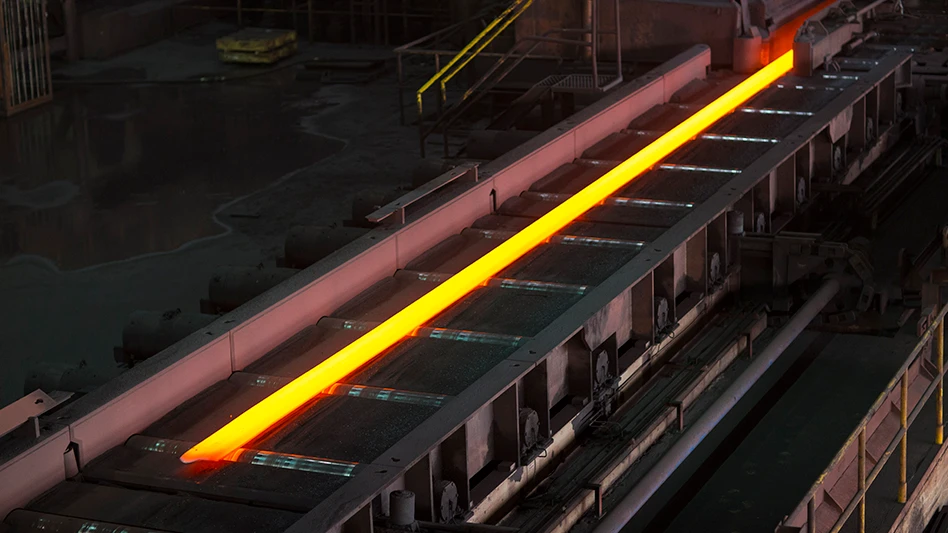
Photo courtesy of Worldsteel and Gerdau
The Brussels-based World Steel Association (Worldsteel), as part of its Short Range Outlook (SRO) steel demand forecast for this year and next, says steel demand in China in 2024 will remain around the level of 2023, but in 2025 it sees Chinese steel demand hitting a downtrend with a 1 percent decline.
“India has emerged as the strongest driver of steel demand growth since 2021, and our projections suggest Indian steel demand will continue to charge ahead," Worldsteel says.
Globally, the association—which is a confederation of more than 60 national steel industry associations—forecasts demand this year will experience a 1.7 percent rebound to reach 1.793 billion metric tons. Next year, it predicts steel demand will grow globally by 1.2 percent to reach 1.815 billion metric tons.
“After two years of negative growth and severe market volatility since the COVID crisis in 2020, we see early signs of global steel demand settling in a growth trajectory in 2024 and 2025,” says Martin Theuringer, chairman of the Worldsteel Economics Committee.
The committee characterizes the global economy as showing resilience despite facing several strong headwinds, including Russia’s invasion of Ukraine, high inflation, high costs and falling household purchasing power, rising geopolitical uncertainties and forceful monetary tightening.”
In China, where more than half of the world’s steel is made, the group expects steel demand in 2024 will remain around the level of 2023, as real estate investments continue to decline, but the corresponding steel demand loss will be offset by growth in steel demand coming from infrastructure investments and manufacturing sectors. "In 2025 we see China steel demand returning to downtrend with a 1 percent decline,” according to Worldsteel.
The committee's view is that China might have reached its peak steel demand, and the country’s steel demand is likely to continue to decline in the medium term as China gradually moves away from a real estate and infrastructure investment dependent economic development model.
In the meantime, though it is hundreds of million of tons behind China in total demand or output, Worldsteel notes India has emerged as the strongest driver of steel demand growth since 2021.
“Our projections suggest Indian steel demand will continue to charge ahead with 8 percent growth in its steel demand over 2024 and 2025, driven by continued growth in all steel-using sectors and especially by continued strong growth in infrastructure investments,” Worldsteel adds. In 2025, steel demand in India is projected by Worldsteel to be nearly 70 million metric tons higher compared with 2020.
In addition to India and its neighboring countries, ferrous scrap processors in the United States send a steady volume of scrap to the Association of Southeast Asian Nations (ASEAN) region (including Malaysia) and to South Korea.
“We observe that mounting difficulties in the ASEAN region, such as political instability and erosion of competitiveness, might lead to a lower trend steel demand growth going forward,” Worldsteel says.
The SRO is somewhat bullish on conditions in the United States—where its domestic mills are by far the largest consumer of U.S.-generated scrap—and South Korea and Japan and, next year, the European Union.
“The developed world is also expected to show a strengthening [steel demand] recovery with 1.3 percent in 2024 and 2.7 percent in 2025, as we expect to see steel demand finally showing a meaningful pick up in the EU in 2025 and continued resilience in the U.S., Japan, and [South] Korea,” according to Worldsteel.
The U.S. continues to show healthy steel demand fundamentals, Worldsteel says, thanks to strong investment activity, which received a boost from the Inflation Reduction Act and a gradual recovery in housing activity.
Globally, Worldsteel says an acceleration in global decarbonization efforts or in efforts to strengthen public infrastructure against rising climate change risks are significant positive risks that can support global steel demand going forward.
As potential downside risks, Worldsteel points to further escalation in geopolitical tensions, inflationary pressures proving more persistent than expected and high and rising public debt levels triggering fiscal consolidation in major economies as having potential to slow down ongoing economic recovery or "even derail it.”
Latest from Recycling Today
- BMW Group, Encory launch 'direct recycling’ of batteries
- Loom Carbon, RTI International partner to scale textile recycling technology
- Goodwill Industries of West Michigan, American Glass Mosaics partner to divert glass from landfill
- CARI forms federal advocacy partnership
- Monthly packaging papers shipments down in November
- STEEL Act aims to enhance trade enforcement to prevent dumping of steel in the US
- San Francisco schools introduce compostable lunch trays
- Aduro graduates from Shell GameChanger program





